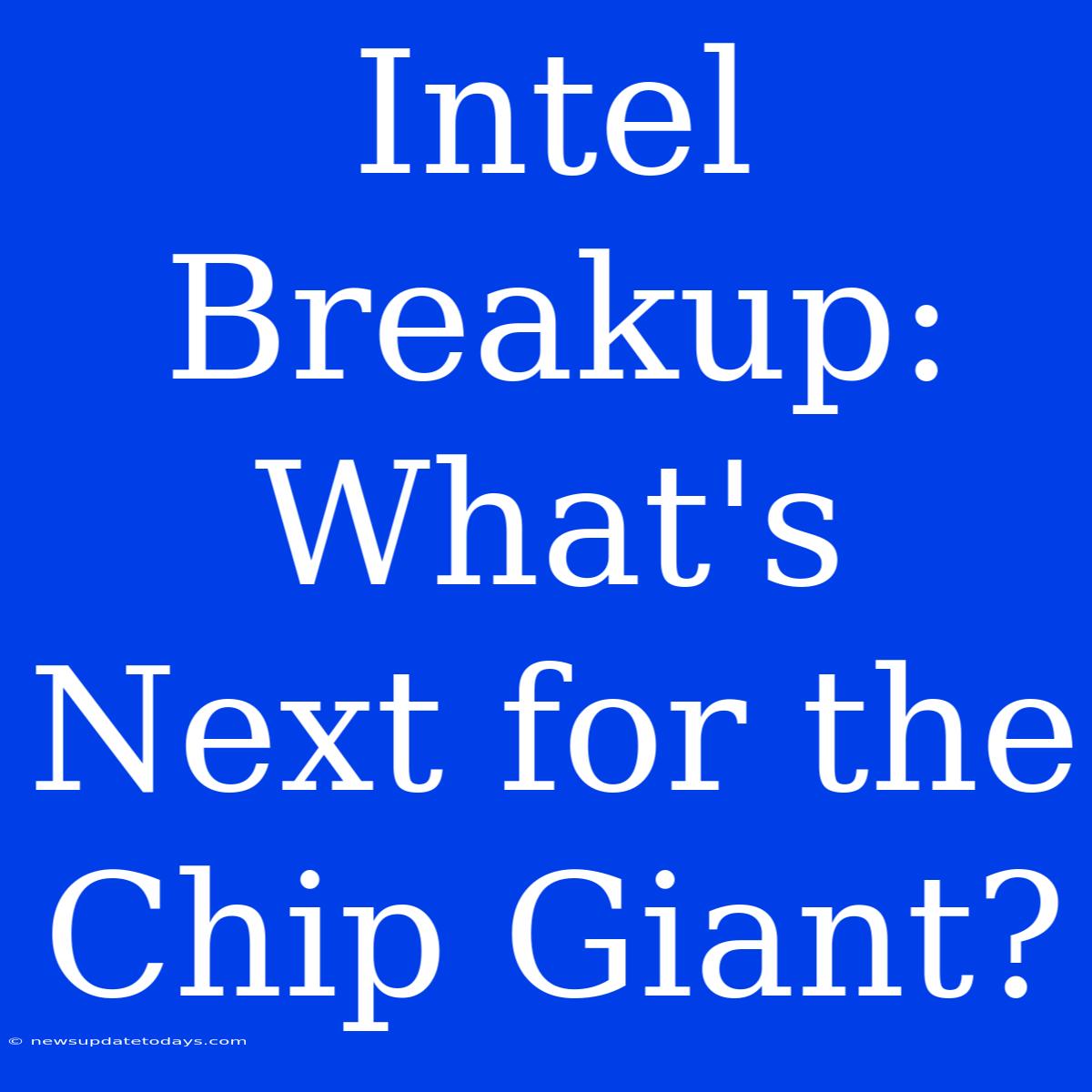Intel Breakup: What's Next for the Chip Giant?
Intel, a name synonymous with computing innovation for decades, finds itself at a crossroads. Speculation about a potential breakup of the company is swirling, raising crucial questions about its future. This article delves into the current situation, exploring the potential ramifications of a split and what this could mean for the chip giant and the broader tech landscape.
Why the Breakup Talk?
Intel's recent struggles, marked by lagging in the race to produce cutting-edge chips and a widening gap against competitors like TSMC and Samsung, are fueling the breakup narrative. Investors are increasingly questioning Intel's integrated model – where the company designs, manufactures, and sells its chips – arguing it's hindering its agility and competitiveness.
The Arguments for a Breakup:
-
Increased Focus and Efficiency: Separating the design and manufacturing arms could allow each unit to focus on its core competencies. The design division could concentrate on innovation and product development, while the manufacturing arm could specialize in optimizing production processes and scaling capacity, potentially leading to greater efficiency and reduced costs.
-
Attracting Investment: A split could make Intel more attractive to investors. A more focused, streamlined company is often perceived as less risky, potentially leading to higher valuations and increased investment opportunities. This influx of capital could then be reinvested in research and development, boosting innovation.
-
Enhanced Competitiveness: By outsourcing manufacturing, Intel could potentially leverage the expertise and advanced technology of leading foundries like TSMC, allowing it to compete more effectively in the rapidly evolving chip market. This would allow Intel to focus resources on design and architecture improvements, rather than struggling to keep up with the ever-evolving manufacturing process.
The Arguments Against a Breakup:
-
Loss of Control: Outsourcing manufacturing would mean relinquishing a significant degree of control over the production process and potentially expose Intel to supply chain vulnerabilities. Maintaining its own manufacturing capabilities provides Intel with greater control over quality and supply, which is particularly crucial in high-stakes areas like data centers and high-performance computing.
-
Potential for Fragmentation: A breakup could lead to fragmentation within the company, potentially hindering collaboration and innovation. The synergies between design and manufacturing are significant, and separating these could weaken the overall strength of the company.
-
High Transaction Costs: A corporate restructuring of this magnitude would be extremely complex and expensive, potentially consuming resources that could otherwise be invested in research, development, and market expansion.
What's Next?
The future of Intel remains uncertain. While a breakup is not guaranteed, the possibility highlights the urgent need for the company to adapt and innovate to stay competitive. The strategic decisions made by Intel's leadership in the coming months and years will be critical in determining the company's future trajectory. We might see increased investment in specific areas of focus, potential partnerships with external foundries, or even a strategic reorganization, short of a full breakup. Regardless of the path chosen, Intel needs to demonstrate a clear and compelling strategy to regain its position as a leading innovator in the semiconductor industry.
Keywords: Intel, breakup, chip giant, semiconductor industry, TSMC, Samsung, manufacturing, design, investment, competition, future of Intel, strategic decisions, corporate restructuring, supply chain, innovation
This article attempts to offer a balanced perspective on the potential breakup of Intel, considering both the potential benefits and risks involved. It uses strong headings, subheadings and bolded keywords to improve readability and SEO. The keyword density is carefully managed to avoid keyword stuffing, while maintaining relevance and ensuring the article ranks well for relevant search terms.

